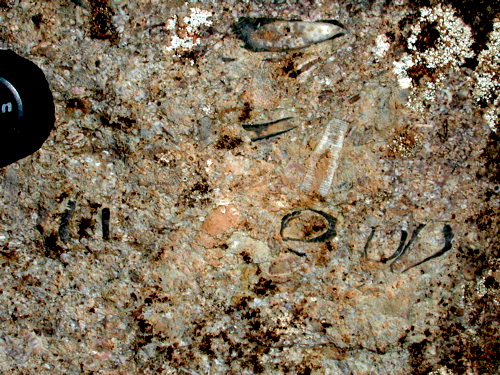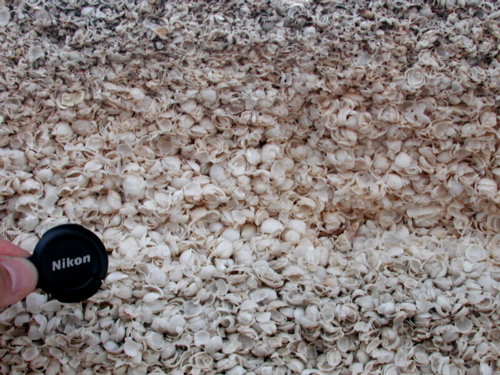 |
|||||
| Info | Carbonates | Structures | Devonian | Contacts | Home |
|
------------------------------------------------ IntroductionCarbonate rocks are made of particles (composed >50% carbonate minerals) embedded in a cement. Most carbonate rocks result from the accumulation of bioclasts created by calcareous organisms. Therefore carbonate rocks originate in area favoring biological activity i.e. in shallow and warm seas in areas with little to no siliciclastic input. In present day Earth these areas are limited to ±40 latitude in region away or protected from erosion-prone elevated continental areas. In the Devonian high-sea level, favoring the development of shallow epicontinental sea, warmer conditions, and relatively low detrital sedimentation rates, resulted in larger thick carbonate buildups. The Murrumbidgee serie is an example of such carbonate buildup. Because they contain numerous bioclasts (i.e. fossils) carbonate rocks are cherish by stratigraphers and paleontologist alike as they enable them to reconstruct stratigraphic sequences and make large-scale correlation between geological formations hundred to thousand of kilometer apart. In addition carbonate rocks’ texture and the nature of their bioclasts offer a detailed insight into their depositional environment. ------------------------------------------------ Depositional EnvironmentsCarbonate depositional environment past or present fall into three general types:
------------------------------------------------ Dunham ClassificationThe Dunham classification (1962) is based on concept of grain/mud support therefore on the proportion mud-particle and the depositional textures. The concept of "support" assume continuity of either the mud matrix or that of the grains. If the carbonate is mud-supported the grains float into a continuum of mud matrix. In grain-supported carbonate rocks the grains from an interconnected skeleton in which the mud fills the gap. The percentage mud/cement at which there is a switch between mud-supported and grain-supported depends on the fabric (preferential agencement) of the particles.
------------------------------------------------ MudstoneA mud-supported carbonate sedimentary rock containing less than 10% particles of clay and fine silt size; the original components are not bound together during deposition. ------------------------------------------------ WakestoneMud-supported limestone containing more than 10% carbonate grains (larger than 20 microns) "floating" in a finer-grained lime mud matrix. ------------------------------------------------ PackestoneClastic limestone supported by its own grains, but also containing some calcareous mud. Examples from Murrumbidgee...
------------------------------------------------ GrainstoneClastic, grain-supported, mud-free limestones. Here is a nice example of grainstone from Shark Bay (WA). ------------------------------------------------ BoundstoneLimestone formed of encrusting or reef-building organisms. ------------------------------------------------ CrystallineRecrystallized limestone in which the original carbonate grains have been transformed in calcite or dolomite. |
||||||||||||||||||||||||||||||||||||||||||
|
||||||||||||||||||||||||||||||||||||||||||
| Introduction |
| Depositional Environ. |
| Classification |
| Mudstone |
| Wakestone |
| Packestone |
| Grainstone |
| Boundstone |
| Crystalline |



